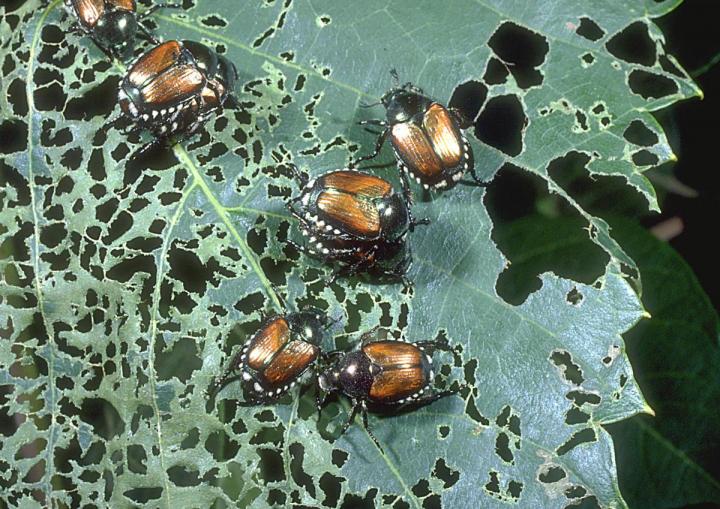Scientific name: Popillia japonica
What Is It?
The Japanese beetle (Popillia japonica) is a garden pest native to northern Japan. The adult eats the leaves of plants while the larvae attack the roots, particularly the roots of grasses.
Is It Here Yet?
Yes. In 2020, the Washington State Department of Agriculture found two Japanese beetles near Grandview and one near Sunnyside. The infestation grew rapidly and now beetles also are in Pasco and Wapato. Tens of thousands of beetles are trapped each year in these south central Washington areas. There is a multi-year eradication effort in place.
In 2024, the department captured thirty-two Japanese beetles in King County near the Seattle-Tacoma International Airport. Trapping efforts in this area will begin in 2025.
Why Should I Care?
A Japanese beetle can attack hundreds of different species of plants, including native species and popular gardening and landscaping plants. An infestation can cause severe damage to plant leaves, and plants that were stressed before an infestation may not survive. Japanese beetle establishment in Washington would be very damaging to agriculture.
How Can We Stop It?
Making sure you’re not transporting the adults or grubs in plants or soil. Though an adult can fly, transportation by humans is its fastest way of invading new areas. There is a quarantine in Yakima and Benton Counties where the infested areas are. If you live here, visit the Washington State Department of Agriculture Quarantine webpage for more information.
What Are Its Characteristics?
- The adult is metallic green and copper, about 3/8 inch long.
- An adult has several small white fuzzy spots along the edge of its abdomen below each wing.
- Larvae are nondescript white grubs found in the soil and look very much like many native and other exotic species. Grubs are best identified by an experienced entomologist.
How Do I Distinguish It From Native Species?
There are a few species of green adult beetles and many kinds of grubs that look like the Japanese beetle. If you have a suspect beetle, please submit it to the Washington State Department of Agriculture.


Identification photos courtesy of the U.S. Department of Agriculture Animal and Plant Health Inspection Service. Page header image courtesy of Joshua Dunlap, Oregon Department of Agriculture.